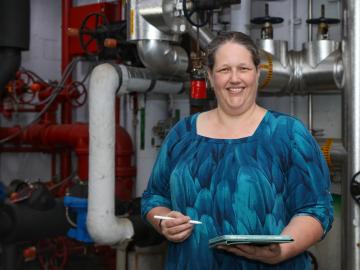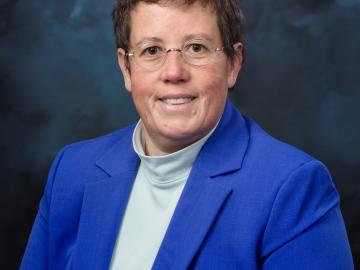
Filter News
Area of Research
News Topics
- (-) Big Data (29)
- (-) Cybersecurity (3)
- (-) Isotopes (23)
- (-) Microscopy (9)
- (-) Nanotechnology (11)
- (-) Polymers (10)
- (-) Space Exploration (5)
- (-) Summit (16)
- 3-D Printing/Advanced Manufacturing (35)
- Advanced Reactors (6)
- Artificial Intelligence (46)
- Bioenergy (18)
- Biology (23)
- Biomedical (18)
- Biotechnology (10)
- Buildings (29)
- Chemical Sciences (30)
- Clean Water (7)
- Composites (14)
- Computer Science (60)
- Critical Materials (8)
- Education (2)
- Emergency (3)
- Energy Storage (17)
- Environment (41)
- Exascale Computing (25)
- Fossil Energy (4)
- Frontier (21)
- Fusion (16)
- Grid (19)
- High-Performance Computing (45)
- Hydropower (1)
- ITER (2)
- Machine Learning (23)
- Materials (24)
- Materials Science (36)
- Mathematics (7)
- Mercury (1)
- Microelectronics (2)
- Molten Salt (5)
- National Security (34)
- Neutron Science (33)
- Nuclear Energy (25)
- Partnerships (29)
- Physics (18)
- Quantum Computing (20)
- Quantum Science (25)
- Security (15)
- Simulation (24)
- Statistics (3)
- Transportation (22)
Media Contacts

Researchers at Oak Ridge National Laboratory have opened a new virtual library where visitors can check out waveforms instead of books. So far, more than 350 users worldwide have utilized the library, which provides vital understanding of an increasingly complex grid.

In the wet, muddy places where America’s rivers and lands meet the sea, scientists from the Department of Energy’s Oak Ridge National Laboratory are unearthing clues to better understand how these vital landscapes are evolving under climate change.

Leadership Tennessee has named Clarice Phelps to its 2024–2025 Signature Program Class XI to collaborate with professionals statewide to address Tennessee’s most serious issues.

Sara Martinez ensures the safety and longevity of aging structures at Oak Ridge National Laboratory, employing her engineering expertise to protect against natural disasters and extend the lifespan of critical facilities.

Phani Ratna Vanamali Marthi, an R&D associate in the Power Systems Resilience group at ORNL, has been elevated to the grade of senior member of the Institute of Electrical and Electronics Engineers, the world’s largest technical professional

Researchers at Oak Ridge National Laboratory have developed free data sets to estimate how much energy any building in the contiguous U.S. will use in 2100. These data sets provide planners a way to anticipate future energy needs as the climate changes.

Researchers at ORNL and the University of Maine have designed and 3D-printed a single-piece, recyclable natural-material floor panel tested to be strong enough to replace construction materials like steel.

Oak Ridge National Laboratory scientists ingeniously created a sustainable, soft material by combining rubber with woody reinforcements and incorporating “smart” linkages between the components that unlock on demand.

Early career scientist Frankie White's was part of two major isotope projects at the same time he was preparing to be a father. As co-lead on a team that achieved the first synthesis and characterization of a radium compound using single crystal X-ray diffraction and part of a team that characterized the properties of promethium, White reflects on the life-changing timeline at work, and at home.

Lætitia H. Delmau, a distinguished researcher and radiochemist at Oak Ridge National Laboratory, has received the 2024 Glenn T. Seaborg Actinide Separations Award.


